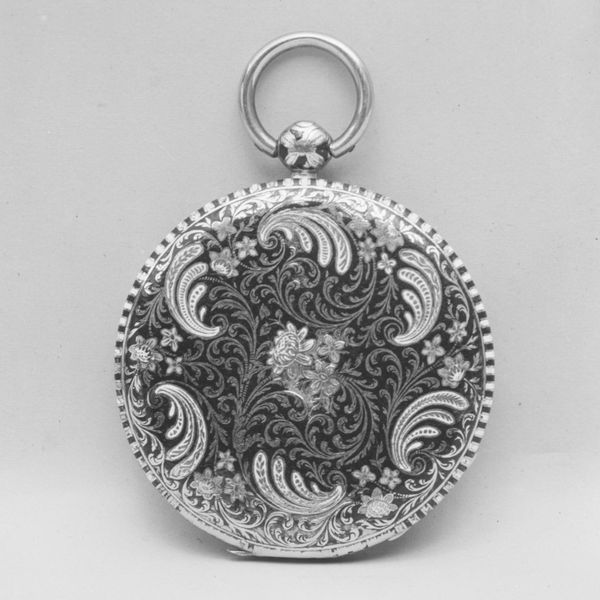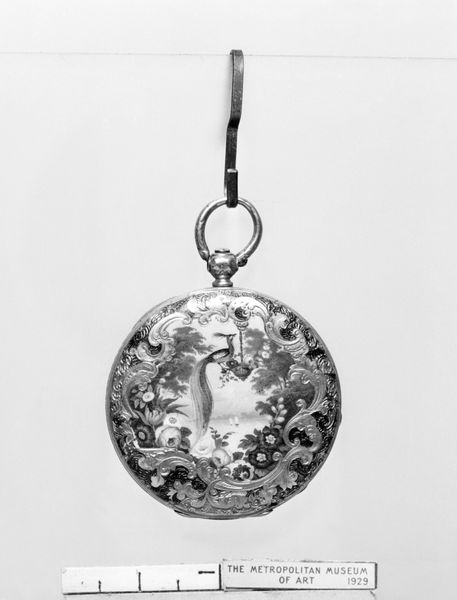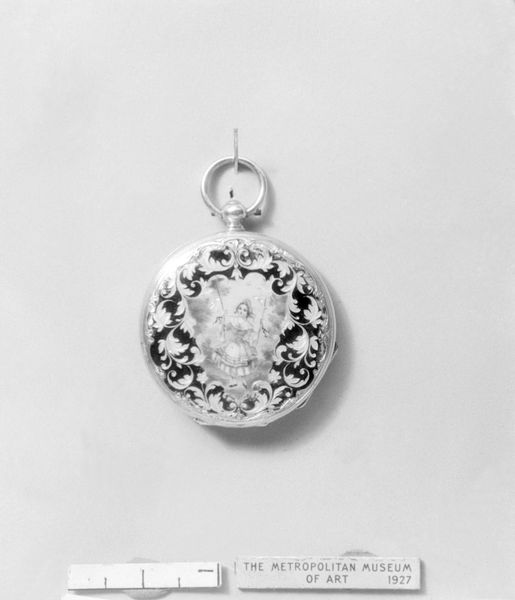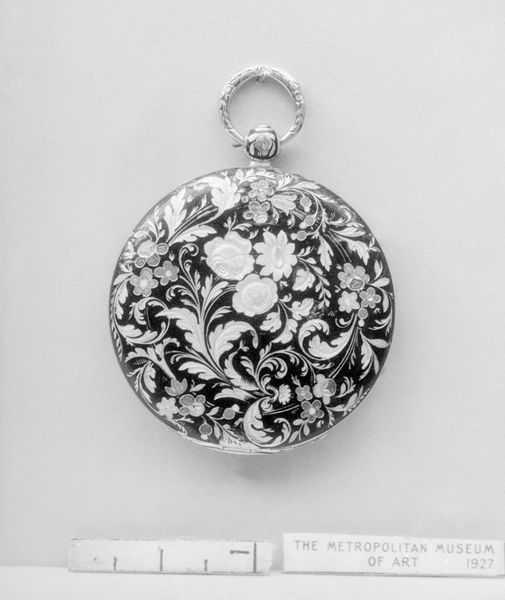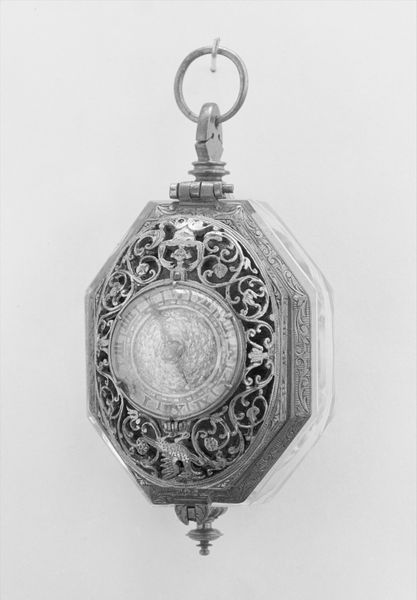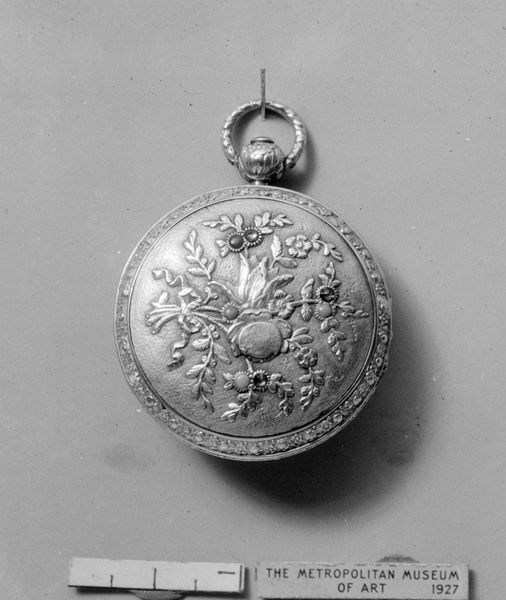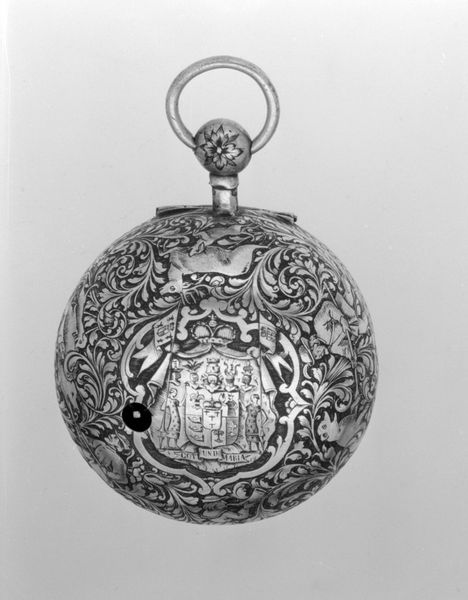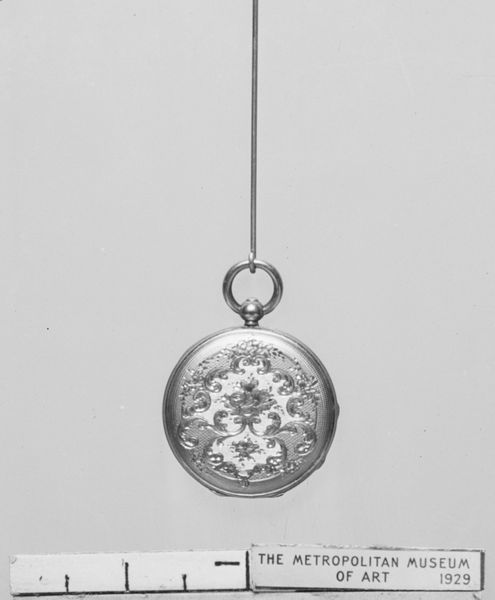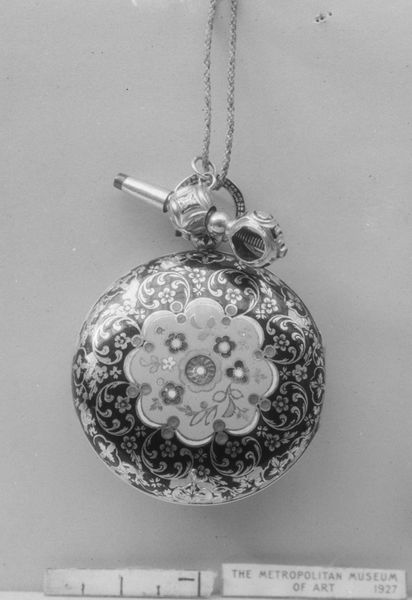
metal, sculpture
#
metal
#
sculpture
#
jewelry
#
decorative-art
#
miniature
Dimensions: Diameter: 1 7/16 in. (3.7 cm)
Copyright: Public Domain
Curator: Look at the delicate floral designs on this watch made sometime between 1815 and 1845 by the Firm of Moynier & Fils, currently residing here at the Metropolitan Museum. The metalwork alone seems incredible. Editor: My first impression is one of meticulous, contained beauty. The dark background against the silver metal really makes the floral designs pop. Curator: It’s a marvel, isn't it? Think of the labor involved in crafting such a small and ornate object, the materials sourced and shaped. We're really looking at more than a timepiece; it’s a miniature sculpture, really pushing the boundaries between the functional and purely aesthetic. Editor: Absolutely, and the floral motifs resonate on many levels. The choice of flowers surely isn't arbitrary; it likely encodes specific meanings or sentiments prevalent in that period, possibly related to love, remembrance, or social status. It seems very intentional. Curator: Do you think this item had specific commissioners or a broader appeal to consumers? How would it affect the type of resources involved? Editor: Certainly. These pieces were as much statements of social identity as functional tools. It signals not only an appreciation for beauty but also the economic means to acquire something so meticulously crafted, hinting to social ties. What kind of artisan was creating it? What was the workshop hierarchy? Curator: The watch is a perfect case study in exploring the relationship between art, craft, and commerce, especially at a time of significant industrial shifts. Understanding that, we realize that it’s really telling the story of its production, labor, and the consumption of luxury goods at the time. Editor: Examining these tiny worlds offers endless perspectives into broader cultural attitudes and values around status, memory, and the delicate balance of time. I find it very revealing. Curator: Indeed, understanding the material reality and production processes can reveal so much about social context and the cultural moment it inhabited. Editor: I appreciate understanding all the symbology, it enhances and gives new meaning to functional tools from the past, as does thinking about them.
Comments
No comments
Be the first to comment and join the conversation on the ultimate creative platform.
